Category: Pictograph Project
-
Inclusive Public Services for Linguistically Challenged presented @ CPRsouth2018
Smart Governments, as part of their Smart Cities programs, must include linguistically challenged in public information and services. Pictographs (pictograms or symbology) can play an important role in disaster communication. Our recommendations, presented at CPRsouth2018 in Maputo, Mozambique (208-10-05), were: NATIONAL POLICIES AND PLANS – Amend national emergency communication plans and policies to include modalities…
-
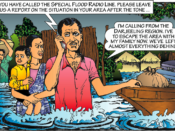
Beyond text translations for the displaced and marginalized
Policy and Plans for Linguistically Challenged The European INTERACT project is part of a Migration Policy initiative. The project is studying how nations set emergency communication policies and plans in support multi-linguistics and crisis management. Findings are not promising and there is a severe need for intervention. Observation was that the studies had left out…
-
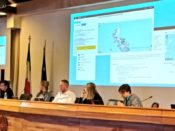
Push Messaging Big Topic at CAP Implementation Workshop
At the annual CAP (Common Alerting Protocol) Implementation Workshop in Rome, many speakers talked about how to disseminate messages on the last mile to end users. As Elyza Jones of OASIS pointed out, SMS only provides short text, is expensive and has the potential to take down the whole GSM network unless it is cell…
-
Sri Lanka completes Pictographs fieldwork, after devastating floods
We had scheduled to carry out the Pictograph comprehensibility and appropriateness tests with Sarvodaya Communities during the last week of May, 2017. Unfortunately, the low-literate and functionally-illiterate communities, in Colombo and Ratnapura Districts, who took part in the previous exercise, were severely affected by the flash floods from the unpredicted heavy rains. Our ground partner, Sarvodaya…
-
Testing our first Prototypical Pictograph Dictionary in the Philippines
We developed a prototypical pictograph dictionary and grammar around heavy rain instigated hazard events; namely ‘floods’ and ‘landslides’. This dictionary was developed from the findings gathered and analyzed from the field study in March. Sahana’s Pictographs in disaster communication project is considering two disaster communication work flows; thus, downstream “alerting” and upstream “reporting”. In alerting,…
-

Do Hazard Pictographs need Context?
What kind of pictographs are suitable to be used for natural disaster alerting? To find out, we were addressing marginalized communities with reading and writing problems in Sri Lanka and the Philippines last month which he have reported on before. Before we go back for a thorough comprehension study in May, we used the visits…
-
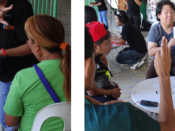
Pictograph-based Disaster Communication with Deaf Communities
After reaching out to low-literate communities in rural and urban Sri Lanka, we addressed another marginalized group in the Philippines: Deaf people. According to UNESCAP, people with disabilities have a 400% higher risk to die in hazard situations. One reason that holds especially for deaf people is the restricted access to formal education, which often…
-
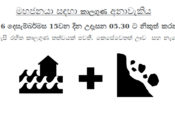
Sri Lankan low-literate communities enjoy symbology in disaster communication
In general low-literate community members, in Sri Lanka, struggled with comprehending the Sri Lanka Meteorological Services text bulletins – that is what was observed. Simpler visual indicators are easier to digest and help them with deciding on the safety and response measures they need to activate. Our aim was to understand how low-literate (or functionally…
-
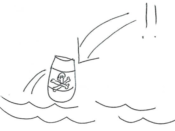
“Help, Pirates!” – Insights from a Disaster Communication Exercise with Experts
Last year, we approached a group of disaster communication experts at the 2016 CAP Implementation Workshop in Bangkok, about 60 people with a profession related to disaster management. We wanted to know how they think about pictograph based communication, what their ideas are, and how they understand pictographs in their own field of expertise. Within…
-
Extending Early Warnings to Linguistically Marginalized Populations
In a work for the World Meteorological Organization, M. Golnaraghi [1] stated that “it is crucial that warning messages are clear, consistent and include risk information, designed with consideration for linking threat levels to emergency preparedness and response actions and understood by authorities and the population.” However, in its current state of practice, early warnings…
